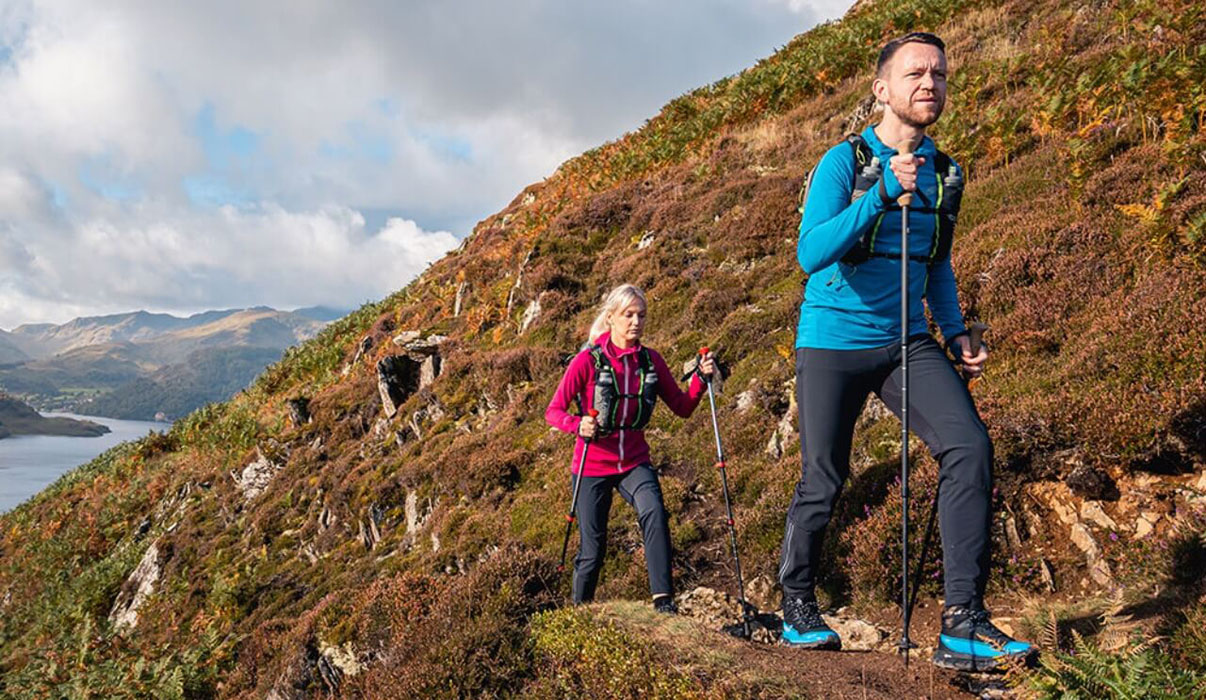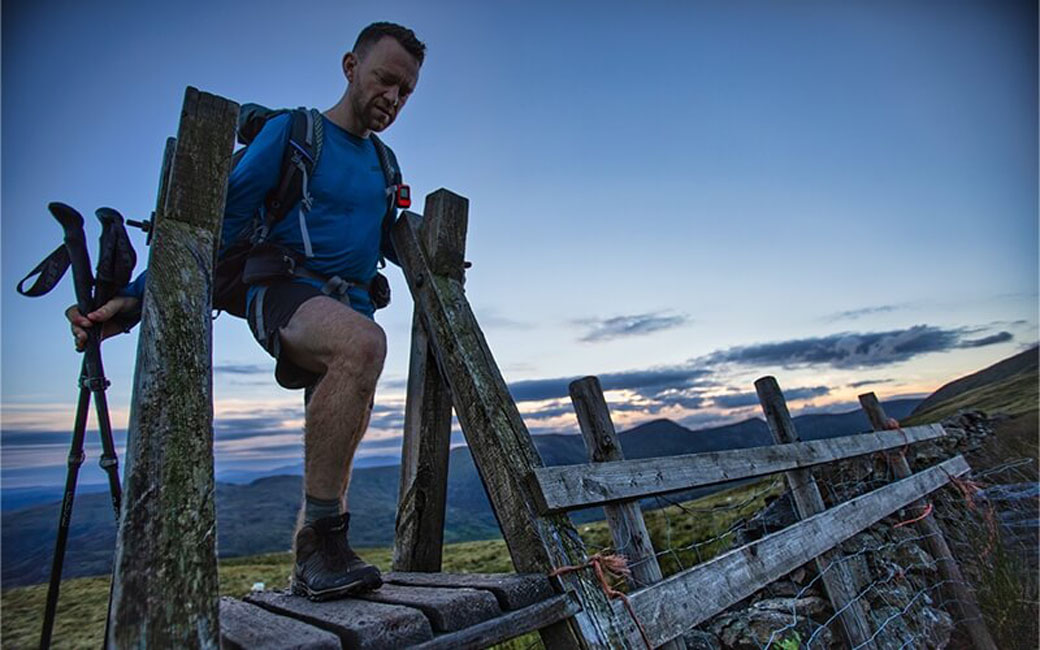
From map and compass to spare layers and safety kit, INOV8 ambassador James Forrest outlines exactly what you need to pack for a day hike in the hills – including the ultimate day hike packing checklist. The checklist includes everything you'll need, including things to help you stay safe and comfortable when the unexpected happens.
Ever got to the top of a chilly mountain summit and realised you’ve left your jacket at home? Have you been caught descending at dusk only to discover your headtorch isn’t in your backpack? Or perhaps you’ve gone on your hike and forgotten to pack any snacks?
These are easy mistakes to make, but the consequences can be quite serious. They can compromise your safety and ruin the enjoyment of your hike. So James has put together a comprehensive day hike packing checklist – something you can refer to every time before you hit the trail.
What is a day hike?
A day hike – as the name implies – is a hike you can complete within a day, as opposed to a long-distance walk or thru-hike that will take several days including overnight stops. Day hikes can range from a 2-hour bimble around a lake, to a 12-hour mission up a remote mountain. But no matter how long the walk, you’ll still need similar kit in your backpack.


What should you wear for a day hike?
Before you pack your daypack, you’ll need to decide what to wear on your body. The best approach is to focus on technical hiking clothing that is comfy, lightweight, breathable and protective. If you abide by the classic layering system, on your top half you’ll need a:
- Technical base-layer (for fast-wicking of sweat)
- Minimalist mid-layer (for insulation and warmth)
While on your bottom half you’ll need:
- Technical underwear (not cotton boxers)
- A pair of hiking shorts or trousers
On your feet a pair of cushioned and supportive footwear with good traction is essential. I personally like to wear the ROCFLY G 390 GTX boots.
What is the purpose of a daypack?
The goal here is quite simple – to keep you safe, warm, dry, well-nourished and happy on your hike.
This means that in your backpack you should have enough food and water to quench your hunger and thirst, enough layers to stave off the cold, adequate waterproofing to repel the rain, and enough safety equipment to ensure you can get off the mountain in one piece.
Having this kit in your daypack will mean that you’re able to deal with unforeseen circumstances, in case the weather changes suddenly or an emergency occurs.
What types of kit should you carry in your daypack?
The stuff you need on a day hike can be split into three main categories:
- Food and drink
This is usually just a packed lunch plus snacks, emergency supplies and lots of water. - Clothing
Spare warm and waterproof layers for inclement weather, as well as accessories such as hat, gloves, buff and cap. - Safety items
This includes navigation items such as paper map, compass and GPS device, as well as equipment for emergencies such as a Personal Locator Beacon (PLB) and emergency shelter/blanket.


What to pack for a day hike: the ultimate checklist
| Day Hike Packing Checklist |
| ✓ | Daypack – about 25 litre capacity, with sturdy straps and ideally a hip belt |
| Walking poles – for balance and to take pressure off your joints |
| Food & Drink |
| Water bottles x 2 – for holding up to 2 litres of refreshing H20 | |
| Food – ample sandwiches, snacks, cakes, sweets and other treats | |
| Emergency rations – extra high-energy bars in case your hike takes longer than expected |
| Clothing |
| Waterproof jacket – an outer layer to keep out the inevitable rain | |
| Waterproof over-trousers – a waterproof layer to keep your legs dry | |
| Thermal jacket – an insulated jacket for when it’s cold on a summit or during rests | |
| Spare mid-layer – to take off the chill | |
| Hat, gloves and neck-warmer – for added warmth when required |
| Safety Kit, Accessories & Equipment |
| Sun hat, sunglasses, sun cream and lip balm – to protect from the sun | |
| Dry bags – waterproof, sealable bags to safely store your gear | |
| Headtorch – for navigating safely at dawn or dusk | |
| Compass – a crucial tool for navigating safely in the mountains | |
| Waterproof map – a hard-copy map is indispensable for navigation | |
| Phone – for using a navigation app or calling for help in an emergency | |
| Powerbank and cable – for charging your phone if it runs out of juice | |
| GPS watch – a Garmin or similar device for navigation and tracking your activities | |
| First aid kit – plasters, painkillers and basic medical supplies | |
| Emergency shelter – a life-saving shelter for emergencies | |
| Emergency survival bag – to shelter from the rain or a storm, if required | |
| Safety whistle – for drawing attention in an emergency | |
| Accessories – zip-lock bags, multi-tool, pen knife, spare shoelaces | |
| Rubbish bag – for carrying out any rubbish and ensuring you ‘leave no trace’ | |
| Toilet tissue, trowel and hand sanitiser – in case you get caught short | |
| Insect repellent – to keep the dreaded midges at bay | |
| Personal medication and toiletries – for any personal medical needs |
What else might you need on a day hike?
While the list above is comprehensive, if you’re taking on a graded scramble or rock climb, or heading out in the height of winter, you may need to pack additional technical equipment. This can include:
- Crampons
- Ice axe
- Climbing rope
- Helmet
- Gaiters
- Personal Locator Beacon (PLB) or satellite messenger device
